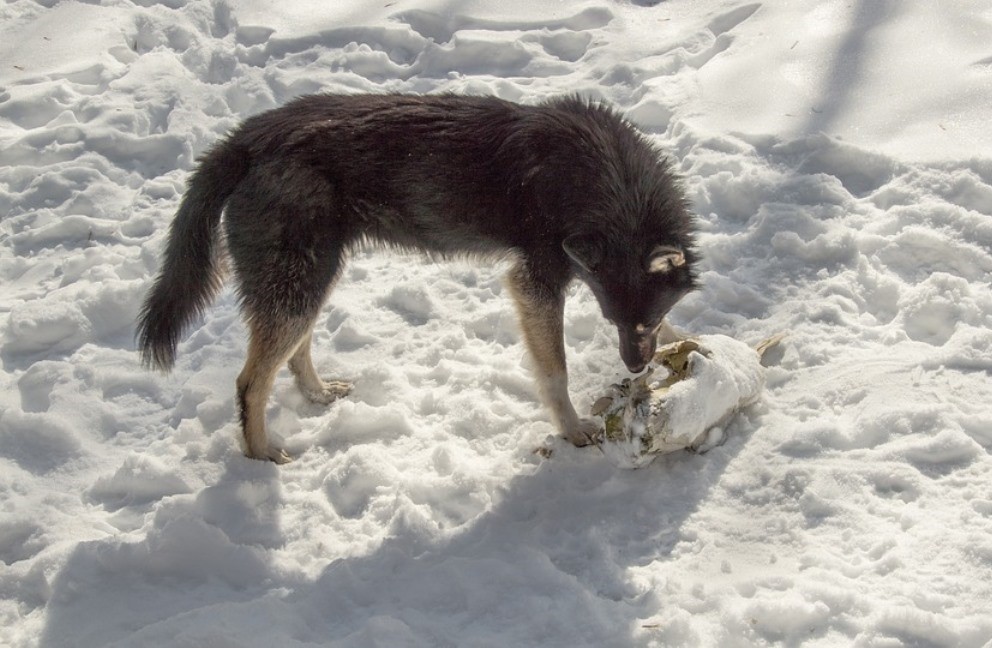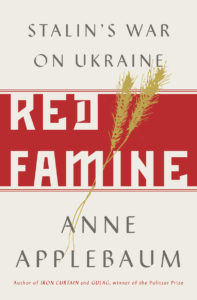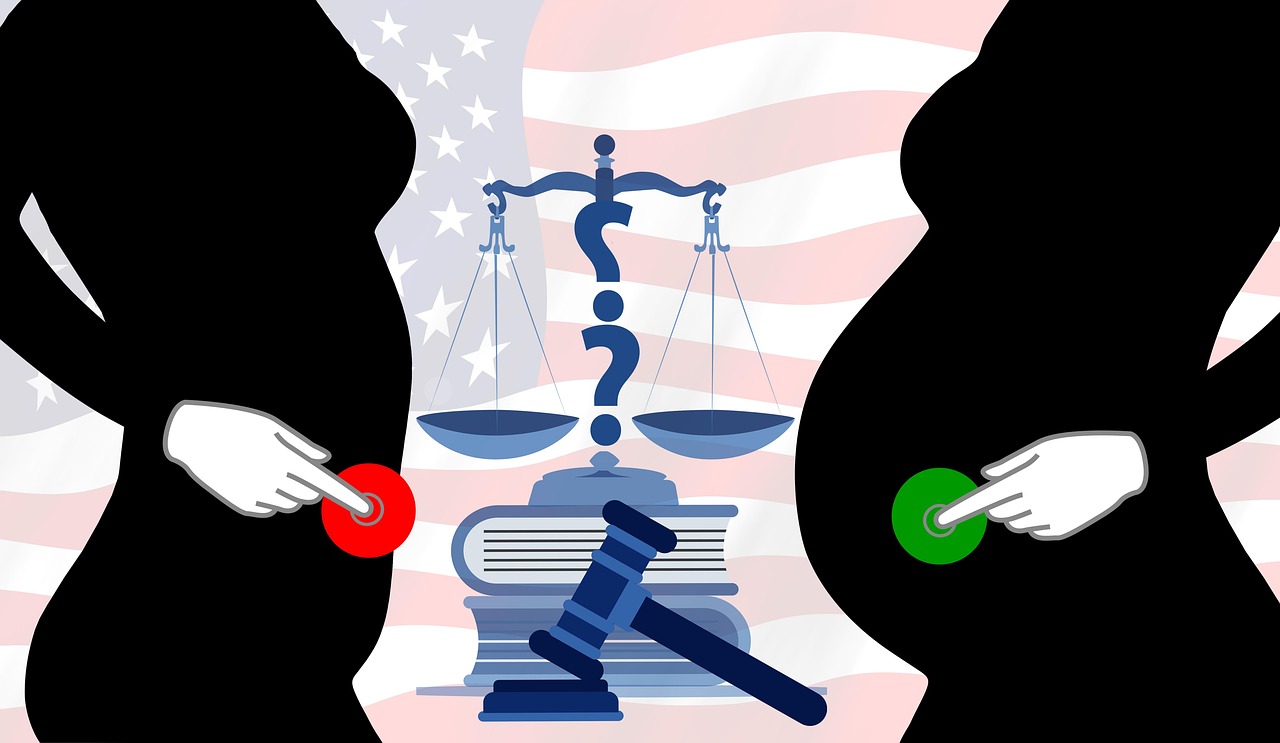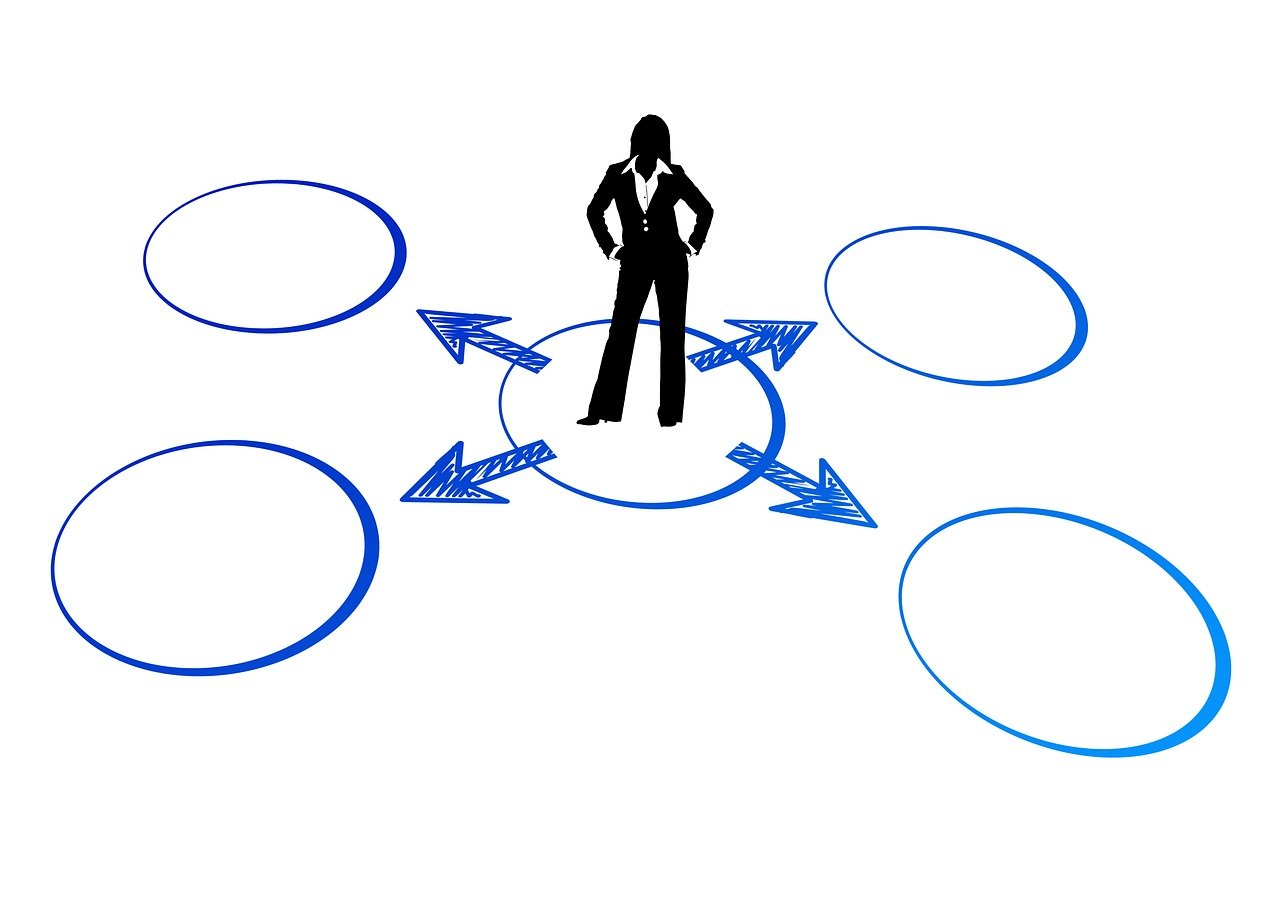Translating deep thinking into common sense
Socialism’s Crime Against Humanity in Ukraine: 4.5 Million Deaths

By Walter Donway
September 28, 2019
SUBSCRIBE TO SAVVY STREET (It's Free)
Book Review: Red Famine: Stalin’s War on Ukraine, by Anne Applebaum. Publishers: Anchor
How many of you have waited, over the decades—with growing scorn for our academic-intellectual establishment—for the world’s most disastrous political experiment and human catastrophe to be “brought to book”?
I wonder how many of you have waited, over the decades—with growing scorn for our academic-intellectual establishment—for the world’s most disastrous political experiment and human catastrophe to be “brought to book”?
With the collapse of the Soviet Union and its Eastern European colonies by 1991, when would men and women freed after 70-plus years of communist totalitarian rule bring forth the bestsellers, the award-winning histories, the PBS documentaries, and the powerful and heart-rending movies? You know, all the intellectual achievements that informed us about that other political catastrophe of the West in the 20th century, National Socialism (Nazism) in Germany?
It is to the everlasting credit of those who relentlessly exposed—and made real in human terms—the German socialist catastrophe that every American schoolchild has heard of the Nazis. But a highly self-serving political paradigm of our time insists that Soviet socialism was “left” and German socialism was “right.” (The chief difference is that in one form of socialism property is “publicly owned” by government and in the other there is complete command and control by government of property still nominally “private”). But because Marxism has shaped the ideology of today’s “left-liberal” academics, who now espouse a “neo-Marxism” as integral to the “Postmodernism” that dominates Western philosophy, the Nazi “holocaust” has remained the only one.
Red Famine by Anne Applebaum
 Yes, we have waited a long time for Anne Applebaum. Applebaum is an American journalist (Washington Post) and historian who was born in Washington, D.C., but identifies profoundly with her Eastern European roots. Graduating summa cum laude from Yale, a Marshall scholar at Oxford, she seems to have had no doubt about her career. She almost immediately embarked upon a series of high-visibility jobs in political journalism (Post editorial board, Spectator), including Warsaw correspondent for the Economist, which took her to live in Poland.
Yes, we have waited a long time for Anne Applebaum. Applebaum is an American journalist (Washington Post) and historian who was born in Washington, D.C., but identifies profoundly with her Eastern European roots. Graduating summa cum laude from Yale, a Marshall scholar at Oxford, she seems to have had no doubt about her career. She almost immediately embarked upon a series of high-visibility jobs in political journalism (Post editorial board, Spectator), including Warsaw correspondent for the Economist, which took her to live in Poland.
Then, in 2004, she published Gulag: A History, an account of the Soviet communist-forced labor camps that won the Pulitzer Prize. In 2012, came Iron Curtain: The Crushing of Eastern Europe: 1944-56—more prizes and honors. Both books were National Book Awards finalists. Both Gulag and Iron Curtain have been translated into more than two dozen languages; Applebaum has lectured about all across the United States and Europe.
The next year, 2013, Applebaum became a Polish citizen and now lives in Warsaw. She is married to a Polish man, with whom she has two children. She describes herself as coming from “a very Reform Jewish family” in Washington, D.C.
In October 2017 came her latest book, Red Famine: Stalin’s War on Ukraine, which is the subject of this review.
Applebaum has delved deeply into Ukrainian, Russian, and other relatively “recently” opened (actually before 1991, starting under Mikhail Gorbachev in Russia) archives of the period 1917-1991, which in every nation under the communist heel had been closed to journalists, historians, or any other researchers. The Ukrainian Parliament enacted “Access to Archives of Repressive Bodies of the Communist Totalitarian Regime of 1917-1991,” transferring historic files to a special archive managed by the Ukrainian Institute of National Remembrance. Public access to the files provided closure for many Ukrainians eager to learn what had happened to their relatives. And for historians it has opened new vistas of historical truth about events that inaugurated a century of human devastation in the name of creating a socialist world order.
For historians it has opened new vistas of historical truth about events that inaugurated a century of human devastation in the name of creating a socialist world order.
Applebaum has enlisted the cooperation of Ukrainian historical societies, university research departments, and independent scholars in the Ukraine, Poland, the Baltic nations, Russia, and Canada (with a large ethnic Ukrainian populace)—she has gone anywhere the trail has led.
As a result, there is infinitely more documentation, statistics, testimonies, and personal remembrances and anecdotes about what Ukrainians call the “Holodomor”—murder by starvation. Holodomor was carried out by the Soviet communists and their Ukrainian communist party political counterparts, secret police, Red Army units, and converted Bolshevik Ukrainian citizens between about 1930 and 1933.
Applebaum tells a story of great complexity: Ukrainian national aspirations (never nearing independence until after WWI); its historical relationship to Russia (whose rulers insisted it was “southwest Russia”); its role as an extraordinary “breadbasket” of Russia and Poland; its distinctive culture, language, and institutions; the Ukrainian educational system crushed by the communists; the increasingly feeble struggle of Ukrainian “Bolsheviks” to govern under Soviet domination; today’s still perilous relationship with Russia; and a great deal more.
The Planned Famine
Since the earliest courageous reports of famine in the Ukraine (and USSR) as early as 1934, and in subsequent accounts, the famine has been called “planned”—the result of deliberate choices by Soviet communist dictator Josef Stalin and the communist leadership. That is not to say that the policies imposed by force, starvation, and terror in the Ukraine did not have diverse motives. One was to use the Ukraine to “save” Russian communism after the collective farming disaster; another was to destroy the Ukrainian “class enemy”; another was to eradicate Ukrainian independence and nationalism.
The Union of Soviet Socialist Republics was history’s first experiment with a socialist government. There had been collectivist communities, “utopias,” but they had been voluntary associations. This was the first time that political power, the force of law, and the police had been in the hands of committed, consistent ideologues of the communistic brand of socialism.
Convinced that the forces of history made socialism inevitable, and that they were destined to implement the change, the Bolsheviks, armed cadres led by Nicholai Lenin and a few others, overthrew Russia’s first elected government in a violent putsch in 1917. At first, there were socialists of many other stripes (for example, the Revolutionary Socialists), but within a few years all were “liquidated” (shot or sent to the rapidly expanding “gulag” of forced labor concentration camps).
Stalin made the collectivization of farming in all areas under Soviet control the core of his implementation of socialism. It was the “proletarianizing” of the population, the collectivizing of the stubborn peasant element in both Russia and the Ukraine to fit the schema of Marxist class warfare. And the peasants indeed resisted in their millions—and died for it, either by starvation as their last food, seed, and livestock were seized; by executions carried out by the secret police or “Bolshevik” citizens acting out Stalin’s mandates; in the rapidly proliferating gulag-forced labor camps; or on the road as literally millions were deported to unpopulated areas or set out on their own when the last scrap of food was gone.
For the Soviet socialist “planners,” the lives of people were not the point. None of their plans had survival of individuals as an objective.
For the Soviet socialist “planners,” the lives of people were not the point. None of their plans had survival of individuals as an objective. As the farm collectivization identified with Stalin’s regime and Stalin personally (and thus utterly beyond question or criticism) began to destroy Soviet agriculture, and grain and other food production dropped precipitously, the goal became to requisition grain and other agricultural produce from the Ukraine to feed Soviet cities (and collective farms) to “preserve the new order,” to “protect socialism,” and to “defend our experiment”—all phrases from Stalin.
The requisitions, at first semi-orderly, devolved into chaos as desperate farmers withheld their own food, seed grain, and livestock—and as requisitioning was turned over to the secret police. And then, to “good Bolsheviks” in the villages or already on collective farms, who beat, robbed, and shot their neighbors. Deaths soared into the hundreds of thousands and ultimately millions from violence, arrests, deportations, and ultimately starvation occasioned by the grain requisitions. The communists simply continued requisitioning; they “needed” the food. Their method of getting it was to increase demands, threats, and punishments. The standard penalty for withholding food—for example, concealing it—became death or deportation to the gulag for 10 years.
Kulaks: The Scapegoats
A vast scapegoating scheme started as early as 1917-1923. At that time, Ukrainians were fighting for their independence against the Red Army, aided at times by the White Army or Poland. Twice, Ukrainian forces came within an ace of defeating the Red Army, driving it from the Ukraine and almost back to Moscow. The courageous resistance on a massive scale probably failed for ideological reasons. It was an era when various forms of socialism were admired everywhere.

Anne Applebaum
The scapegoating scheme created by the Bolsheviks in these early years was to create a Ukrainian “class enemy,” an “enemy of the proletariat,” and then to turn the city-dwelling “masses” and “poor proletarian peasants” against this new class enemy. The class enemy was the “kulak,” a Russian word for the most successful peasant farmers, who owned a bit more property, more livestock, and could hire a few workers. This, obviously, was the rural “capitalist” exploiter and propertied reactionary of Marxist theory. In the early days of seizing power in the Ukraine, destroying Ukrainian nationalism, and creating a Soviet Socialist Ukraine, communist propaganda was enormously successful. It scapegoated the “kulaks” as class enemies, rural exploiters, counter-revolutionaries, bourgeoise nationalists—the vocabulary of Bolshevik abuse was prolific, indeed. Their fellow citizens, especially from the cities, were propagandized with hate messages. When the crisis came, few felt sorrow or guilt for the kulaks.
In time, the useful denunciation “kulak” was applied more widely and indiscriminately to anyone who resisted the dictates of the communist enforcers. Refusing to join a collective farm (and resistance was vast and at times violent, including by women), refusing to pay taxes and requisitions of money and food, and any opposition in speech or action to almost any self-labeled “Bolshevik,” all became the “counter-revolutionary” activity (and then “conspiracy” and “national conspiracy”) of the kulaks.
In fact, the “kulaks,” as initially defined, were the country’s agricultural entrepreneurs, directing capital to the most productive agricultural uses. Investing in equipment. Hiring and training workers. The sole objective of the Soviet socialist planners was to make these property-owning “capitalists” into paid laborers working for the state—often paid not in cash but kind. Without property, without money, there was no independence of any kind. No mobility. No choice. Just the collectivist farm of the socialist utopia.
Josef Stalin arrived at an explicit policy called “de-kulakization” and “liquidation of the kulaks as a class” for elimination of the landed farmers. Orders were given for executions, mass deportations, sentencing to the gulag, or starvation by seizing all property of a family. This was seen as a path to eradicating Ukrainian patriotism and political independence in the rural areas (as it had been in the cities). Thus, the chief cultural institution (and often only meeting place) in thousands of towns and villages and hamlets—the church—was systematically attacked. Churches were closed and converted into party headquarters, Bolshevik cultural centers, or warehouses. Church bells all over the Ukrainian countryside came crashing down to the street as Ukrainians stood by and wept. Priests often bravely resisted, but were assigned to collective farms, sent to the gulag, or shot.
Seeking Statistics from Hell
Red Famine brings refinement of documentation, new personal reports, official statements, and other records of all kinds to telling the story of the Holodomor. No historian—or investigation, or study—had pinned down the death toll. All information, all commentary, even mention of “starvation,” was dangerous for decades under communist rule. Figures range from at least 4.5 million to commonly 7.0 million, but as high as 10 million or more. The chaos was unimaginable. What about hundreds of thousands deported? Millions sent to the gulag? A rate of death from typhus estimated at 10 times the normal because of famine? Those never born because of certain death? The mass graves created by the Red Army? Who was counting?
In one moving chapter, “Aftermath,” Applebaum describes how with the lifting of repression, Ukrainian demographers have tackled the wealth of new information and converged on a kind of consensus: 3.9 million direct losses and six-tenths of a million lost births. That comes to 4.5 million deaths, about 13 percent of the population of the country at that time. That would translate into 42 million deaths of today’s United States population. But recall that it applies only to the Holodomor—not the earlier 1920s Soviet-induced famine and war or the Red Terror that followed in 1937. For children, it was worse, so that “life expectancy” for a boy born in 1933, the height of the famine, was eight years. For a girl, it was five years.
Russia suffered, certainly, and the common reference is to “the Soviet communist famine.” But Russia suffered far less—perhaps 3 percent direct deaths. The Soviet socialist leadership, headed by Stalin, deliberately caused famine in Ukraine to “save” the great Russian socialist experiment—and to “industrialize” Russia. (The disaster of the state-planned industrialization is another story.)
Applebaum devotes almost a chapter to documented stories of parents eating children who had already starved to death, or murdering children to eat them.
In large towns, dozens or hundreds of new corpses would lie in the streets each morning. As often occurs during famines, no one had the strength to bury the dead. Parents abandoned children when food ran out, tried to hand them through train windows, put them on trains for destinations unknown, simply left them in an abandoned home, or, as is recorded, threw them into the river to end their misery. Certainly, there was cannibalism. And, unfortunately, it was not an extreme or bizarre “outlier.” Applebaum devotes almost a chapter to documented stories of parents eating children who had already starved to death, or murdering children to eat them. The communists put up helpful signs at one point: “To eat your own children is a barbarian act.” Officially “only” 2,500 people were convicted of cannibalism during the Holodomor.
Through it all, Stalin and other leaders kept demanding more grain, bacon, and millet to export abroad to earn hard currency for industrializing Russia. They were “building the future of Marxism.” Stalin remained, in a sense, “clear-headed” throughout. He read reports, fired off orders and letters to party officials, strategized endlessly about dealing with “enemies” everywhere. The famine was part of a conscious strategy for “building Soviet socialism.” Stalin heard the reports of the famine, sometimes in vivid and appalling detail. His wife reportedly witnessed many of the scenes in her travel, and became psychotically depressed at Stalin’s role. In the early hours of November 9, 1932, in the immediate aftermath of the celebration of the fifteenth anniversary of the revolution, she shot herself. The evidence was covered up medically and the fact of suicide kept from both Stalin and much of history, but the suicide is no longer disputed.
The official excuses and propaganda became fantastic. Stalin published and promulgated an article, “Dizzy with Success” in which he said the astonishing success of collective farming had overexcited the lowest ranks of the communist cadres who were to blame for the various petty mistreatments of Ukrainian farmers.
By spring 1933, a time when cherry blossoms explode into color all across the Ukraine, the famine reached its worst. The Soviets responded by returning some grain earlier requisitioned (providing “aid”) and sharply reducing requisitions. Ukraine’s weather always had made possible two annual harvests. In May, too few people were healthy enough to harvest the winter crop; college students and others were rushed to the fields to help. Unbelievably, the crop planted in the fall with the last strength, and the last seeds, of the farmers, made a difference.
But the policy change had other motives. Across the USSR, prisons and forced labor camps were overflowing. Some 800,000 people were under arrest; concentration camps couldn’t cope. And, then, the Soviet regime desperately needed this harvest and decided not to destroy any more of the people who could bring it in. Already, the Soviet socialists were in a desperate struggle to suppress worldwide reports that the Soviet socialist utopia had created a famine, killing millions.
The Aftermath
The aftermath, in 1937, was the Red Terror across the entire Soviet empire—another story. But beginnings of the Terror usually are traced to the Ukraine, where originated the policies, tactics, practices, and excuses of mass murder of “class enemies,” “capitalist wreckers,” “counter-revolutionaries,” and those Stalin said merely “carried a Party card in their pocket” but balked at enforcing directives.
We have never had a work of the extent, credibility, and sheer heart-rending specificity of this contemporary report on the birth of socialism. It is as though the memory of the Ukrainian people has been released to speak. We read reports of communist apparatchiks dispatched with new diktats for a village and arriving to discover—death. A dead village. The harvest came, at last, but how to bring it in? Some 60 percent of horses and 70 percent of oxen had been eaten or died of hunger. But their owners, too, were gone. The last meal of one family, before they simply abandoned everything to hit the road, was soup made from rotting horse skin.
From 1933 to the late 1980s, the silence imposed upon the Ukraine and its survivors was almost absolute. A poem read on local television with the line “black with hunger” brought an investigation of the poet by local communist authorities. But people wrote of their memories and hid them under floorboards. An entire, extensive secret and oral tradition emerged in the Ukraine as a counterpart to the official history. Frankly, just the story of the half-century suppression of the burning truth of a whole nation makes Red Famine irreplaceable history. It is as though anyone, anywhere, who knew what actually had happened in the Ukraine had to tell the story. When President John F. Kennedy invited Soviet premier Nikita Khrushchev to visit America (and Disneyland), a Senate fact-finding committee took upon itself to publish a report “Nikita Khrushchev: Butcher of the Ukraine.” Khrushchev had earned that title during the Red Terror when Stalin sent him to “earn his spurs” in Ukraine by managing the slaughter of more millions of the “class enemy.”
The Soviet communists vehemently insisted on a definition that applied “genocide” solely to the Nazi holocaust—and in the end got their way.
A kind of symbolic struggle has been waged over applying the term “genocide” to the Ukraine famine. Given recent scholarship, such as Red Famine, it appears obvious. The Polish-Jewish lawyer who invented the term spoke of Ukraine as a “classic example” of his concept. But that was in the early 1940s. Later, when the new United Nations debated a convention on genocide, politics trumped legal scholarship. The Soviet communists vehemently insisted on a definition that applied “genocide” solely to the Nazi holocaust—and in the end got their way. Today, the legal definition of “genocide” excludes such Soviet actions as the cultivated famine.
Today, Russia, under a premier who was a secret police (KGB) operative in the last days of communism, is pursuing a policy intended to bring Ukraine under Russian rule. Again, publications in Russia are referring to the “Holodomor Hoax” as “one of the 20th century’s most famous myths and vitriolic pieces of anti-Soviet propaganda” (2015 Sputnik News). Indeed, that publication reported, only Nazis in the Ukraine asserted that the Holodomor happened.
Perhaps it matters less, now. The debate over the term “genocide” once was a proxy for debate over the right to a Ukraine independent of Russia. Since 1991, that has been a fact. During the Russian invasions of the Crimea and eastern Ukraine in 2014, Russia claimed as its basis the need to defend the Russian population of Ukraine against “genocide” by “Ukrainian Nazis.” While Russia successfully occupied the Crimea, Russian invasion of eastern Ukraine was repulsed by Ukrainian forces.
Russia’s attitude toward Ukraine—a fear of an independent Ukraine integrated into Europe, has changed little. In 1991, Ukraine rejected the entire Soviet communist project. Ukraine’s suffering left a terrible mark, but Ukraine survived. Today it’s free, and, thanks to books like Red Famine, and to free men and women who will settle for nothing less than the truth, Ukrainians understand their tragic and hopeful history.
Related Posts:
About the Author: Walter Donway
-

“Deep Learning”—But Is It Conscious?
April 10, 2025
-

AI: Intimations of “Emergence”
April 10, 2025
-

The Neuroscience of Cringe: Why the Past Still Burns
April 6, 2025
-

The 2025 Election: Australia vs the Global Deep State
April 1, 2025
-

Why the Trump-Musk Tour of Fort Knox Matters
March 29, 2025
-

A Meeting of Minds
March 27, 2025
-

Abortion and the Minimum Wage Law
March 24, 2025
-

Federalism or Anti-Federalism—That is the Question
March 24, 2025
-

A Most Humane Solution for All Peace-Loving Gazans
March 22, 2025
-

Doug Ford Calls (And Wins) Snap Election in Ontario to Combat...
March 19, 2025
